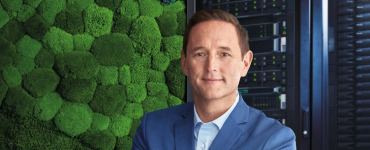How do energy suppliers, who are also telecommunications providers, shape resilient infrastructures? Experts from the eco Networks and KRITIS Competence Groups will discuss this on 16 April at the DE-CIX MeetingCenter in Frankfurt. One of the panellists of the event “Resilience Recommendations in the Context of Municipal Network Infrastructures: Municipalities and Municipal Utilities Targeted by KRITIS” is Lorenz Grehlich from M-net. In this interview, he provides tips for resilient network infrastructures.
Mr Grehlich, how does M-net define infrastructure resilience?
We define resilience in terms of the networks’ robustness in the light of various events that we anticipate. In extreme cases, this could be deliberate sabotage, but could also apply to weather-related disasters or outages that affect our Internet, as well as our operating premises and data centres. In the architecture of the Internet sections, we pay particular attention to edge and node disjunctions to ensure that redundant lines never run in the same route and that different building entries are used. We have a classification system in which our Network Engineering has drawn up clear guidelines on how locations and networks are to be connected. When selecting the location of our operating premises, we also take the power supply from the energy supply company into account, so that we place the locations in different network sectors. In addition to the physical conditions, the logical network layer is also secured against failures in various ways, while the redundancy of system components is implemented across multiple locations, in so-called geo-redundancy.
How can resilience be optimised in the networks?
Resilience initially only entails costs. In order to keep these costs within reasonable limits for our customers, we are constantly working to optimise the networks – for example, by reducing opto-electronic conversion. We also invest in prevention and detection. Through proactive surveillance of fibres, manipulations can be detected in real time and fibre breaks can be precisely allocated down to the metre. This not only saves time in restoration, but also saves costs, as targeted troubleshooting is enabled.
How does M-net map incorporate resilience in data centre operations on the physical side?
Contrary to the situation years ago, when we relied solely on the service level agreements of our suppliers, we now keep all the necessary components in stock ourselves to ensure rapid recovery in the case of a disaster. This enables our specialists to act immediately, without delay. We have also prepared measures to compensate for major damage scenarios. I won’t provide details at this point, given that this is a sensitive topic. It should be noted that the effort we invest in resilience has increased significantly. This applies not only to the physical aspects, but also to organisational ones, such as implementing business continuity management.
Mr Grehlich, thank you very much for the interview!
Register now for the event Resilience Recommendations in the Context of Municipal Network Infrastructures: Municipalities and Municipal Utilities Targeted by KRITIS on 16 April, 12 to 5 p.m. at the DE-CIX Meeting Center Frankfurt.




